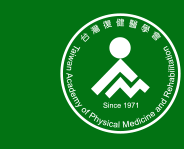Rehabilitation Practice and Science
About This Journal
Rehabilitation Practice and Science (RPS), formerly entitled The Taiwan Journal of Physical Medicine and Rehabilitation, is the official journal of the Taiwan Academy of Physical Medicine and Rehabilitation, located at No.1, Chang-Te Street, Taipei 100, Taiwan. It has been continuously published since 1973.
Starting in 2023, the journal expanded its vision toward the international scientific community and began publishing all articles in English to reach and appeal to researchers around the world. RPS is a peer-reviewed, open-access journal that invites submissions in the fields of physical medicine and rehabilitation from all over the world. The journal publishes original articles in experimental, academic, and clinical research in rehabilitation medicine and related disciplines. Accepted article types include original studies, reviews, case reports, guidelines, letters to the editor, and clinical multimedia. Its target readership includes academic researchers, physicians, physical therapists, occupational therapists, speech therapists, nurses, and other healthcare professionals working in physical medicine and rehabilitation.
RPS follows a biannual issue structure (two issues per year). Starting in 2025, the journal adopted an incremental publishing model, allowing accepted articles to be published online individually as soon as they complete production, without waiting for the full issue to be compiled. While enhancing the timeliness and visibility of published research, the journal continues to assign articles according to its traditional issue schedule:
- Articles published from January to June are grouped under Issue 1, and
- Articles from July to December are grouped under Issue 2.
Digital Archiving
The journal is preserved in CLOCKSS and Portico, the two leading preservation archives that guarantee persistent access for the very long term. Articles also receive Digital Object Identifiers (DOIs) from the CrossRef organization to ensure they can always be found.
Advertisements
The journal does not accept adverts from third parties.


